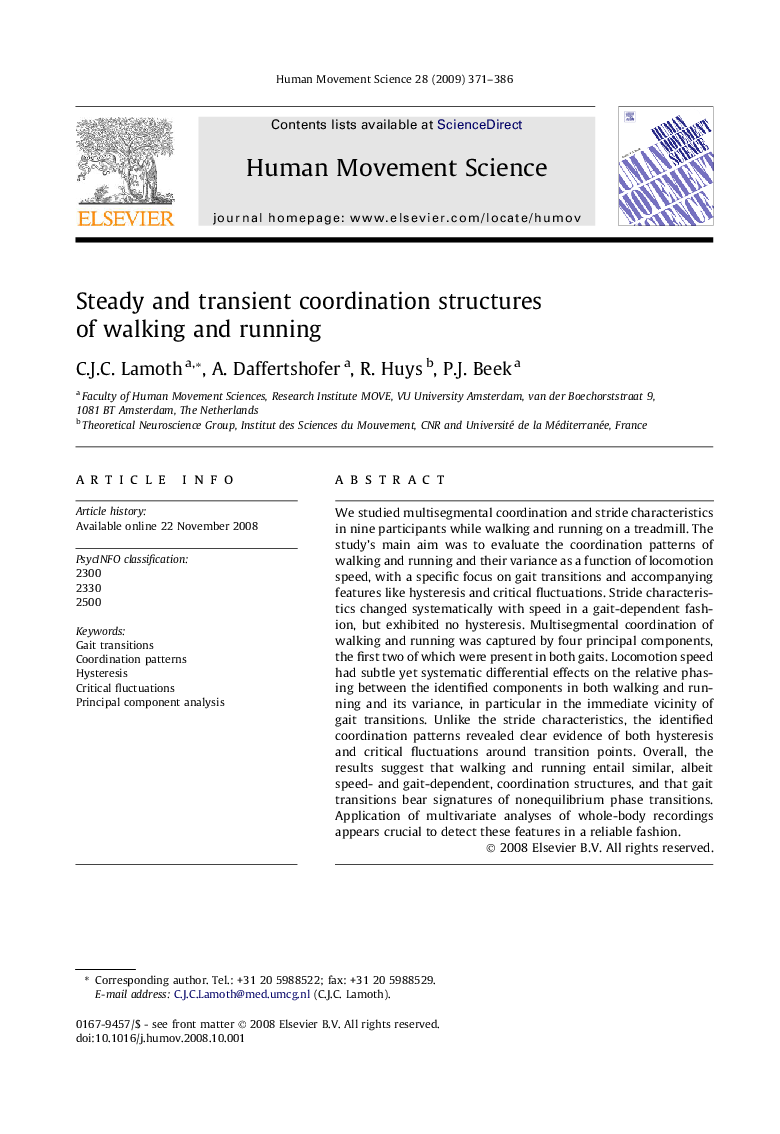| Article ID | Journal | Published Year | Pages | File Type |
|---|---|---|---|---|
| 928847 | Human Movement Science | 2009 | 16 Pages |
We studied multisegmental coordination and stride characteristics in nine participants while walking and running on a treadmill. The study’s main aim was to evaluate the coordination patterns of walking and running and their variance as a function of locomotion speed, with a specific focus on gait transitions and accompanying features like hysteresis and critical fluctuations. Stride characteristics changed systematically with speed in a gait-dependent fashion, but exhibited no hysteresis. Multisegmental coordination of walking and running was captured by four principal components, the first two of which were present in both gaits. Locomotion speed had subtle yet systematic differential effects on the relative phasing between the identified components in both walking and running and its variance, in particular in the immediate vicinity of gait transitions. Unlike the stride characteristics, the identified coordination patterns revealed clear evidence of both hysteresis and critical fluctuations around transition points. Overall, the results suggest that walking and running entail similar, albeit speed- and gait-dependent, coordination structures, and that gait transitions bear signatures of nonequilibrium phase transitions. Application of multivariate analyses of whole-body recordings appears crucial to detect these features in a reliable fashion.
